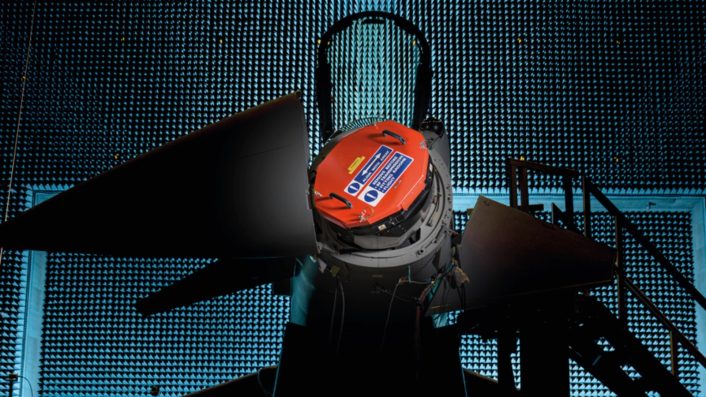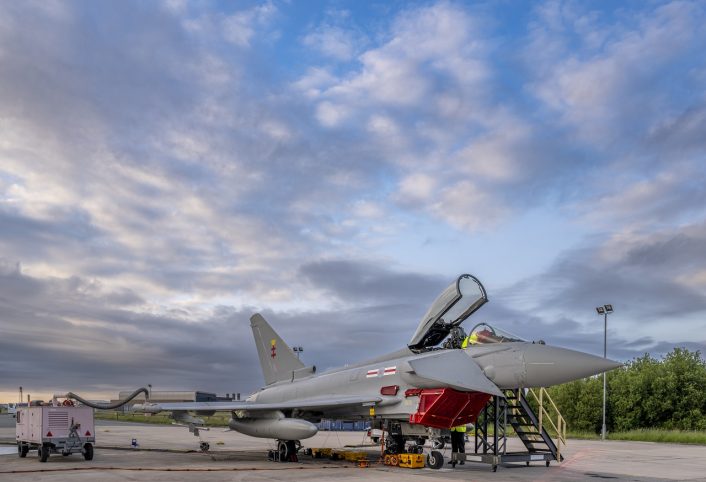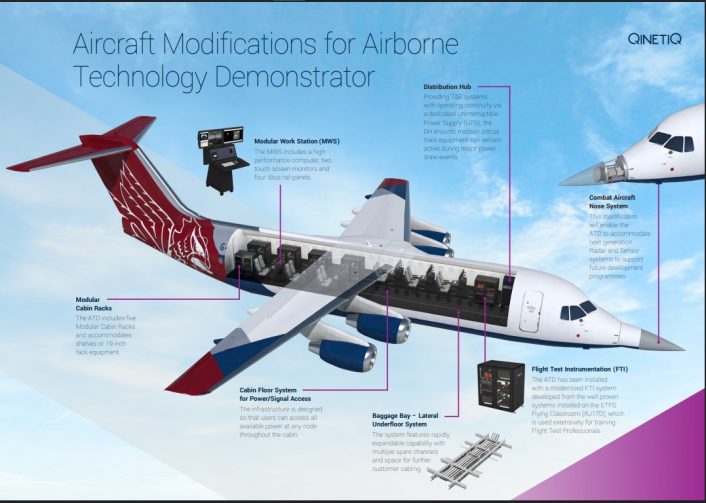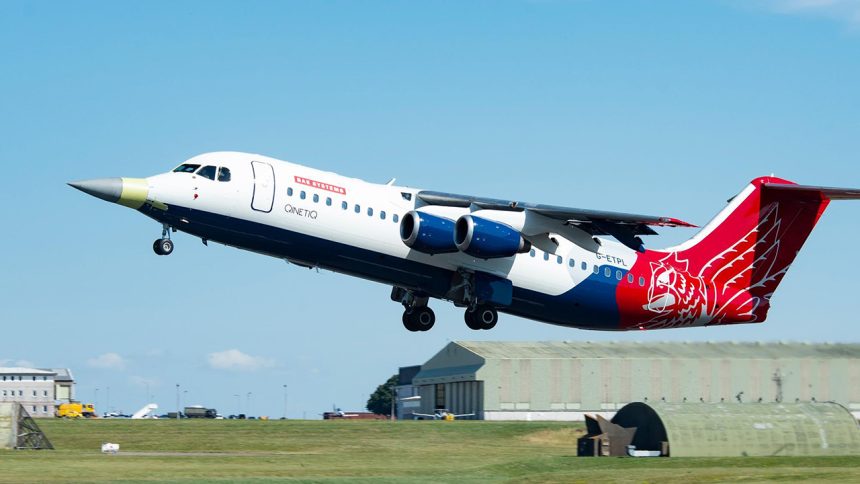A modified Avro RJ100 will support integration of Leonardo UK’s ECRS Mk2 AESA radar for RAF Typhoons, reducing costs and accelerating development.
BAE Systems and QinetiQ are preparing to modify an Avro RJ100 regional jet into a dedicated flight-test platform for the integration of the European Common Radar System Mk2 (ECRS Mk2). The radar is currently under development by Leonardo UK for the Royal Air Force’s Eurofighter Typhoon fleet.
The information was first reported by FlightGlobal, which highlighted that joint work on the QinetiQ-owned aircraft, registered G-ETPL and designated as the Airborne Technology Demonstrator (ATD), has been ongoing for several years. The aircraft first appeared in 2023 with a distinctive “combat aircraft nose system”, designed to accommodate next-generation radar and sensor systems.
Supporting Typhoon’s Next-Generation Radar
According to BAE Systems, efforts in 2025 have focused on defining the modifications necessary to support ECRS Mk2 trials. These included airworthiness assessments, structural and avionics design changes, and integration of the radar interface, as mentioned by FlightGlobal’s report.
“Having completed our analysis, we expect to begin work on the modifications required to the aircraft in the coming months and ensure it is ready to support our scheduled work on ECRS Mk2,” said Paul Smith, Typhoon Strategy Delivery Director at BAE Systems Air.

The ECRS Mk2, developed by Leonardo UK, is a new-generation active electronically scanned array (AESA) radar. Beyond traditional search and targeting functions, it is designed to provide wideband electronic attack, high-resolution synthetic aperture radar (SAR) imaging, and automatic target recognition.
The radar forms part of the Typhoon’s Phase 4 Enhancement (P4E) program, a broader upgrade package intended to extend the aircraft’s operational relevance well into the future. It is the most advanced variant of the ECRS radar, with the others being the Mk0 and Mk1, and it will only equip RAF Typhoons.
Complementing Typhoon Flight Tests
The ATD will complement Typhoon flight-test assets by allowing a significant portion of work to be conducted away from frontline fighters. BAE Systems estimates that more than 50% of current radar flight-test activities could be shifted to the RJ100 platform, enabling longer endurance missions, earlier evaluation of radar modes, and lower overall cost.
Smith explained: “We believe it can achieve earlier and longer flight tests, accelerate capability quicker and more cheaply, and demonstrate progress on ECRS Mk2’s unique features.”
By transferring a substantial amount of testing to the RJ100, industry partners can free Typhoons currently used for testing purposes while ensuring a more efficient test campaign. BAE Warton, for instance, operates a number of Typhoons for testing, including airframe ZK355 – the first Tranche 3 RAF Typhoon, which was used both for the first flight of the ECRS Mk2 and the testing of the MBDA SPEAR 3 air-to-surface weapon.

Progress on ECRS Mk2
According to Leonardo, the first ECRS Mk2 prototype was delivered to BAE Systems in April 2023, marking a key program milestone. Following integration and ground-based testing at Warton, initial flight trials were completed in September 2024 using a Typhoon test aircraft. These sorties confirmed the radar’s baseline functionality ahead of more extensive tests.
The ECRS Mk2 is scheduled to be installed on 40 Tranche 3 RAF Typhoons beginning in 2028, with service entry expected before the end of the decade. Leonardo UK has already secured funding for long-lead components and is anticipating a contract for full-rate production later in 2025.
The Airborne Technology Demonstrator
Details of the ATD’s configuration were released by QinetiQ – who operates the jet, which described it as a modern airborne laboratory designed to replace ageing flying testbeds in the UK’s defense evaluation fleet. Based on the Avro RJ100 quadjet, the aircraft features a modern flight-test instrumentation system, five modular cabin racks for mission equipment, and workstations for real-time monitoring.
The most notable modification is the combat aircraft nose system, which allows installation of next-generation radars and advanced sensor payloads. This flexibility is expected to make the ATD a long-term enabler for multiple Typhoon-related upgrades, including future iterations of Leonardo’s Praetorian defensive aids subsystem.

As mentioned earlier, the combat aircraft nose system was first unveiled in 2023. The radome appears to resemble that of a Typhoon, further hinting at the programs which will be supported by the ATD.
Strategic Importance
As noted by BAE Systems, the ECRS Mk2 program will enhance Typhoon’s ability to conduct air dominance and suppression of enemy air defenses (SEAD) missions, while securing hundreds of jobs across the UK’s defense aerospace sector. These capabilities can give the Typhoon and its pilots an unmatched multi-range detection and survivability in highly contested battle spaces before peer adversaries, according to the info released.
“The ATD will allow both the UK and its European partners to mature and iterate Typhoon’s avionics to exploit broader capabilities which ECRS Mk2 brings,” Smith explained.
Both BAE Systems and Leonardo UK are also central to the Global Combat Air Programme (GCAP), where lessons learned from the ECRS Mk2 are expected to feed directly into sixth-generation fighter development. It should be noted that there is already a test aircraft for GCAP and the broader UK Future Combat Air System (FCAS) program, the Boeing 757 ‘Excalibur’ testbed.









